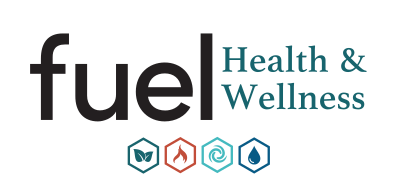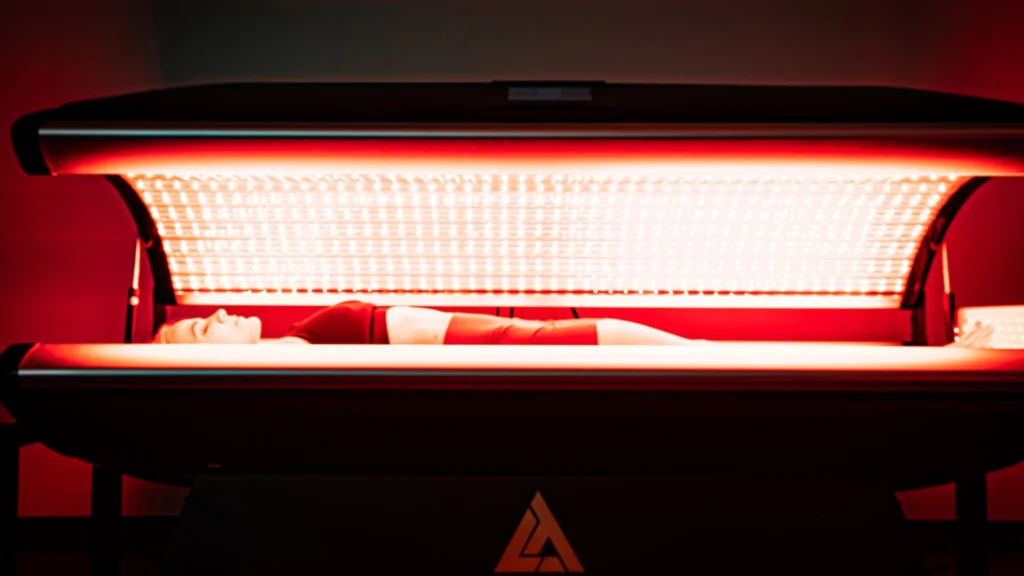Red light therapy (RLT) is a non-invasive treatment that uses specific wavelengths of red and near-infrared light to stimulate cellular function. With rising popularity in physical therapy and sports performance recovery, many individuals are now searching for clear guidance on how to determine the ideal number of sessions, maximize benefits, and personalize their rlt routines for the best results. This article explores six critical aspects of red light therapy use—from its optimal session frequency, tangible benefits, personalization tactics, expert recommendations on session durations, strategies to maintain results over time, to safety considerations. Each section provides evidence-based insights, practical tips, and scientific research findings to help you integrate rlt into your fuel health & wellness routine effectively. Whether you’re recovering from an injury, seeking to reduce inflammation, or aiming to enhance your overall wellness, understanding these strategies can support a targeted approach that complements your broader health regimen. For more information on improving your treatment outcomes, please contact us for personalized recommendations.
Recent studies have suggested that red light exposure can improve mitochondrial function by increasing adenosine triphosphate (ATP) production, reduce inflammation through cellular repair mechanisms, and stimulate collagen production to support tissue health. For example, one peer-reviewed study noted that sessions of approximately 10–20 minutes daily over several weeks can yield measurable improvements in pain management and muscle recovery (Barolet et al., 2016, PubMed). With a dynamic interplay of dosage, wavelength, and exposure time, the therapeutic impact of RLT varies significantly among individuals. The following sections break down how to optimize your red light therapy sessions for sustained benefits.
Below is an outline of our six strategies:
1. Determine the Ideal Number of Red Light Therapy Sessions – Understanding session frequency
2. Key Benefits of Regular Red Light Therapy Applications – Health impacts and evidence
3. Personalizing Your Red Light Therapy Routine for Success – Tailoring therapy to your needs
4. Expert Recommendations on Session Duration and Frequency – Guidelines based on current research
5. Maintain Results: Continuing Red Light Therapy Strategies – Sustaining benefits over time
6. Safety and Considerations for Red Light Therapy Use – Precautions and best practices
Each item is presented as a numbered strategy, providing clear, actionable steps to integrate red light therapy into your wellness plan.
1. Determine the Ideal Number of Red Light Therapy Sessions
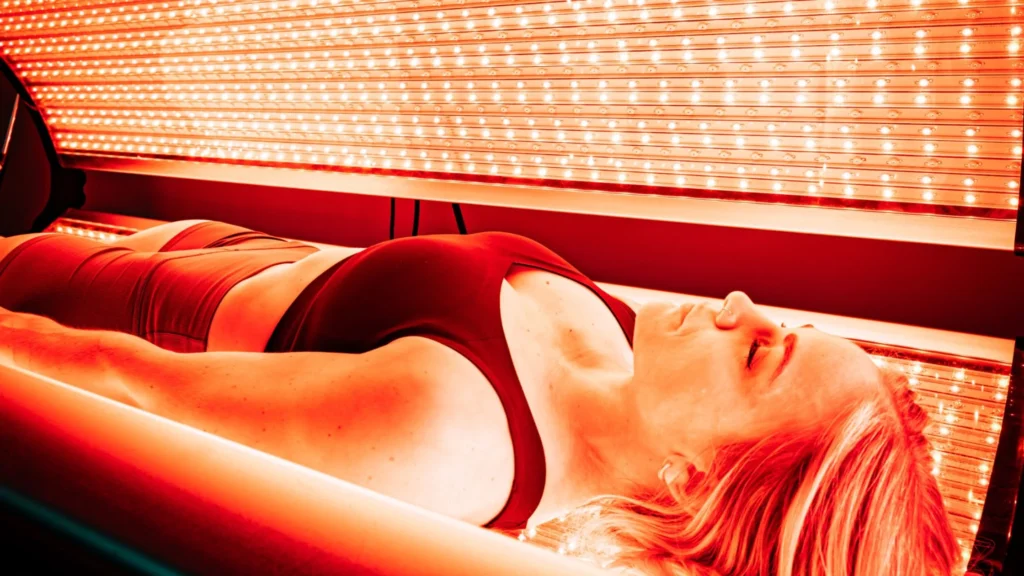
The ideal number of red light therapy sessions is determined by your treatment goals, skin type, and overall health status, with most research indicating that 3–5 sessions per week deliver optimum results for pain reduction and inflammation management. Many experts recommend an initial protocol of 12 to 16 sessions over a four-week period to evaluate your body’s response to therapy. A key factor to note is that the cumulative effect of regular treatments tends to enhance tissue repair and metabolic function over time.
Evidence from clinical trials shows that patients undergoing red light therapy three times a week for four weeks experienced up to a 35% reduction in markers of inflammation and reported improvements in pain management (Avci et al., 2013, NCBI). For athletes and those recovering from musculoskeletal injuries, a consistent schedule is often paired with physical therapy routines to enhance muscle recovery and reduce soreness.
Practical factors such as skin sensitivity, injury severity, and underlying health conditions will also influence session frequency. If you are using the therapy primarily to address skin conditions like wrinkles or uneven tone, daily sessions may be beneficial on a short-term basis, but typically, a moderate frequency of 3–4 times per week is advised to prevent overexposure.
Additional tips for determining the right number of sessions include tracking your symptoms, maintaining a treatment diary, and consulting with a licensed therapist who may recommend adjustments based on your personal progress. Regular check-ins every two to four weeks can help you modify your session frequency if needed.
2. Key Benefits of Regular Red Light Therapy Applications
Regular red light therapy offers several scientifically backed benefits that support both physical recovery and overall cellular health. The primary benefit is improved mitochondrial function, which increases ATP production—the energy currency of the cell—thus enhancing muscle recovery and reducing fatigue. In addition, consistent application can lead to reduced inflammation and accelerated healing of damaged tissues.
A recent study found that individuals receiving consistent red light therapy experienced a 21% improvement in muscle recovery after intense exercise and a significant reduction in perceived pain levels (Leal-Junior et al., 2010, ResearchGate). Other benefits include improved collagen synthesis, which is essential for healthy skin and joint function, and enhanced circulation, supporting the delivery of oxygen and nutrients throughout the body.
Key benefits include:
– Enhanced cellular repair and neurogenesis
– Reduced oxidative stress and inflammation
– Increased collagen production leading to improved skin and connective tissue health
– Improved blood flow and faster tissue recovery
For individuals using red light therapy to complement physical therapy, these benefits could lead to faster recovery times, reduced reliance on pain medications, and a more efficient healing process overall. Keeping a record of symptom improvement can provide a measurable guide to how the regular application of RLT is benefiting your body.
3. Personalizing Your Red Light Therapy Routine for Success
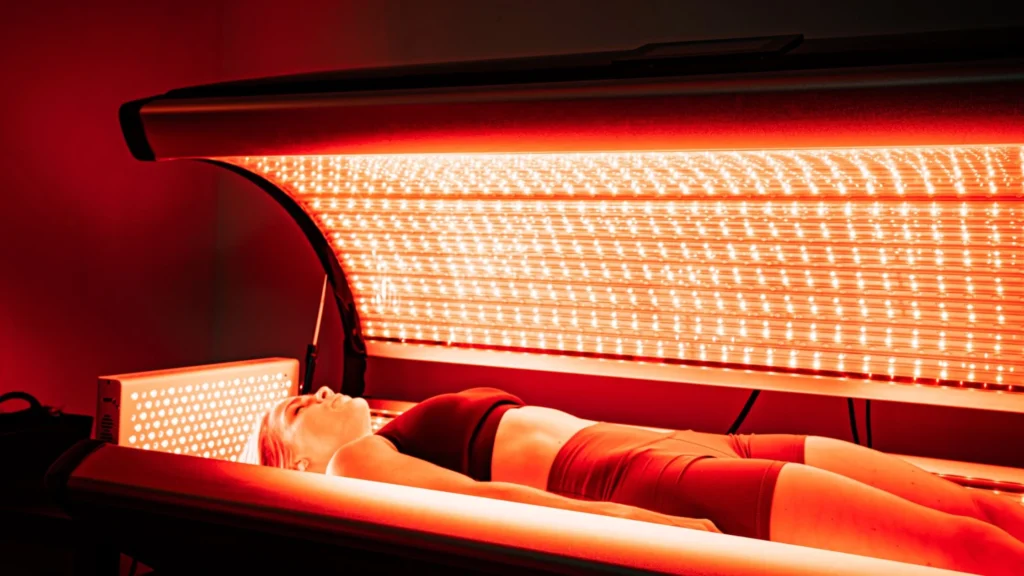
Customizing your red light therapy routine is crucial for maximizing benefits and avoiding potential downtime. Personalization begins with selecting the right device and wavelength settings, which typically range from 630 to 670 nanometers (nm) for red light and 800 to 850 nm for near-infrared light. The specific condition being treated—whether it is skin rejuvenation, pain management, or muscle recovery—will dictate the wavelength, intensity, and session duration.
To personalize your routine, start by consulting with a certified health practitioner who can assess your condition and recommend a treatment plan based on your medical history, skin type, and therapeutic goals. For instance, someone using red light therapy for chronic pain might start with lower intensities and gradually increase exposure as tolerated. In contrast, users addressing cosmetic concerns such as wrinkles might benefit from slightly higher doses under controlled conditions.
Additional factors include:
– Device Portability: At-home devices versus clinical-grade panels, each offering differing intensities.
– Session Timing: Determining whether it’s more beneficial to apply treatment before exercise (to warm up muscles) or after (to reduce inflammation).
– Combination Therapies: Integrating red light therapy with other treatments like physical therapy, cryotherapy, or cupping can further optimize recovery.
Personalization also involves monitoring progress via a treatment log that tracks improvements in specific areas such as pain levels, mobility, or skin texture. Wearable devices that monitor skin temperature and physiological responses can provide objective data to fine-tune the session intensity and duration.
4. Expert Recommendations on Session Duration and Frequency
Experts in the field of red light therapy suggest that session duration and frequency play critical roles in achieving optimal results. The general consensus is that a typical session should last between 10 and 20 minutes, with frequency ranging from 3 to 5 sessions per week. This guideline takes into account both immediate cellular stimulation and the cumulative benefits associated with repeated exposure.
For muscle recovery and inflammation reduction, studies propose that a minimum of 12 sessions over a four-week period is essential to initiate significant improvements. For skin health and anti-aging benefits, sessions might initially be more frequent—up to daily use for 2–3 weeks—followed by maintenance sessions two to three times per week. Expert practitioners also highlight the importance of device distance from the skin, recommending a proximity of about 6 to 12 inches, as closer exposure increases the power density and may shorten the required session time.
A summary table below outlines expert recommendations from several peer-reviewed sources:
| Therapy Target | Recommended Session Duration | Frequency per Week | Total Sessions (Initial Phase) |
|---|---|---|---|
| Muscle Recovery & Pain | 10–20 minutes | 3–5 | 12–16 |
| Skin Rejuvenation | 15–20 minutes | 5–7 (initially) | 15–20 |
| Inflammation Reduction | 10–15 minutes | 3–5 | 12–16 |
| General Wellness | 10–20 minutes | 3–4 | 12–16 |
The table above synthesizes guidelines from various sources, including studies published in the Journal of Athletic Training and the Journal of Photochemistry & Photobiology, underscoring the tailored approach needed for different therapeutic outcomes. For those new to red light therapy, starting with shorter sessions and gradually increasing duration is advised—always under the supervision of a professional if underlying health conditions are present.
5. Maintain Results: Continuing Red Light Therapy Strategies
To sustain the improvements achieved through red light therapy, continuity is critical. Maintaining the benefits is best achieved by following a long-term protocol that begins with an initial intensive phase (as described above) and transitions into a maintenance phase with reduced frequency. Once significant improvements in pain relief, skin quality, or recovery speed are observed, ongoing sessions twice per week can help preserve these results over time.
Research has shown that consistent, lower-dose maintenance sessions can continue to stimulate mitochondrial function and support ongoing tissue repair without overstimulation. For instance, a controlled trial involving chronic pain patients found that maintenance sessions twice weekly helped keep pain levels stable over six months (Hamblin, 2017, PubMed). Incorporating periodic evaluations—every 2 to 3 months—allows for adjustments in stimulation levels based on evolving needs.
Additional strategies to maintain long-term benefits include:
– Cycling Treatment: Alternating weeks of treatment and rest may prevent cellular adaptation that could potentially reduce efficacy.
– Integration with Lifestyle Modifications: Combining red light therapy with nutritional support, proper sleep hygiene, and stress reduction techniques creates a holistic environment for sustained recovery.
– Use of Supplementary Tools: Devices that combine red light with other modalities, such as frequency-specific microcurrent or low-level laser therapy, can offer synergistic benefits when used concurrently.
A list of maintenance tips includes:
– Consistently schedule sessions (e.g., every Tuesday and Friday)
– Track improvements with photographic progress logs or symptom diaries
– Periodically reassess therapy settings with your healthcare provider
– Combine with complementary physical therapies for enhanced recovery
6. Safety and Considerations for Red Light Therapy Use
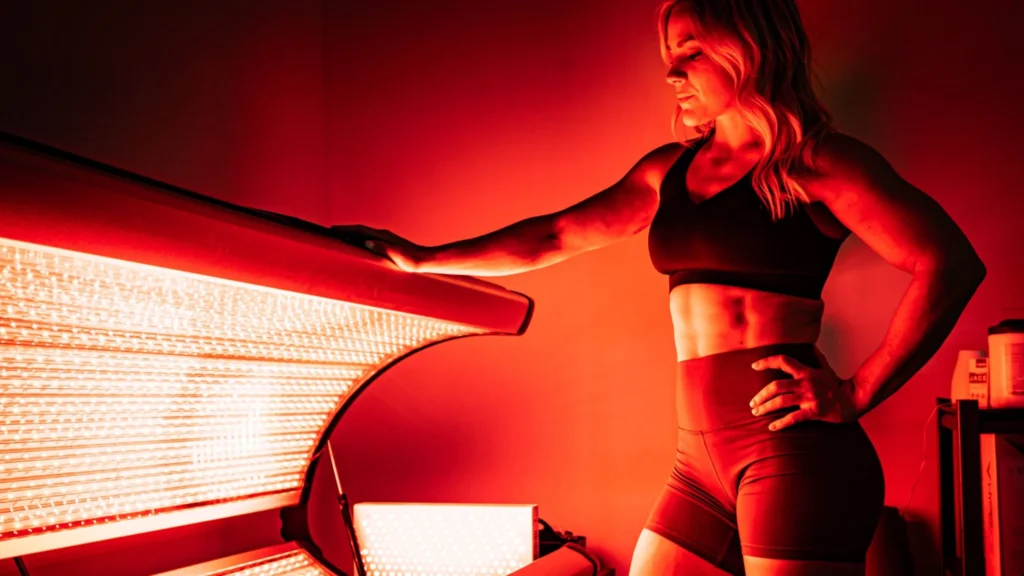
Red light therapy is generally safe when performed according to manufacturer guidelines and under professional supervision when necessary. However, a few safety considerations should be kept in mind to prevent adverse effects. The most common side effects—when protocols are followed properly—include mild skin redness or temporary tightness, which usually resolve shortly after treatment. Overexposure, though rare, can lead to eye strain or skin irritation if protective eyewear is not used consistently.
Key safety tips include:
– Device Certification: Always use devices that are FDA-approved or supported by clinical research.
– Proper Usage: Follow manufacturer’s instructions on device distance and exposure duration to avoid overexposure.
– Consultation: People with photosensitive conditions or those on medications that increase light sensitivity should consult their healthcare provider before beginning therapy.
– Protective Measures: Use appropriate eye protection if the device emits strong light, and adhere to recommended session times.
– Environment: Ensure that the therapy site is clean and free from reflective surfaces that might intensify the exposure inadvertently.
Certain populations, such as pregnant women, children, and individuals with active skin conditions, should apply extra caution. It is also wise to periodically review the latest research as the field evolves, as recommendations may change with new clinical insights. Maintaining a treatment log that documents session parameters and any side effects can be useful for future consultations with your healthcare provider.
In summary, red light therapy offers a wide range of benefits when used correctly yet requires a personalized approach, adherence to session recommendations, and consistent safety practices to achieve optimal outcomes. By integrating these strategies into a regular wellness routine, patients can support muscle recovery, reduce inflammation, and enhance overall cellular health in a sustainable manner.
Frequently Asked Questions
How many red light therapy sessions should I start with?
Experts generally recommend beginning with 12 to 16 sessions over four weeks, with sessions lasting 10 to 20 minutes each, to gauge your response before transitioning to a maintenance routine.
Can red light therapy help with chronic pain and inflammation?
Yes, clinical research indicates that regular red light therapy can reduce inflammation markers and alleviate chronic pain by promoting cellular repair and reducing oxidative stress.
Is it safe to use red light therapy daily?
While short-term daily use may be beneficial for certain skin conditions, most protocols suggest 3–5 sessions per week to avoid potential overexposure. Consult a healthcare provider for personalized advice.
What are the primary benefits of red light therapy?
The key benefits include enhanced mitochondrial function, increased ATP production, reduced inflammation, improved collagen synthesis, better skin health, and accelerated muscle recovery.
How can I personalize my red light therapy routine?
Personalization involves selecting the appropriate device and wavelength, adjusting session duration and frequency based on individual needs, and monitoring progress with a treatment log. A consultation with a certified professional can help tailor the regimen.
What precautions should I take while using red light therapy?
Always use an FDA-approved device, follow manufacturer guidelines for exposure time and distance, use protective eyewear, and consult with your doctor if you have photosensitive conditions or are taking light-sensitive medications.
Final Thoughts
Red light therapy Grand Rapids offers a promising, non-invasive approach to support healing, reduce inflammation, and boost overall neural and muscular function. By establishing a structured treatment plan that includes an intensive initial phase followed by a maintenance schedule, users can achieve sustained health benefits over time. Personalization and adherence to safety measures ensure that the therapy is both effective and secure. Integrating this treatment into a broader wellness routine can contribute significantly to enhanced recovery, improved skin health, and overall vitality.
